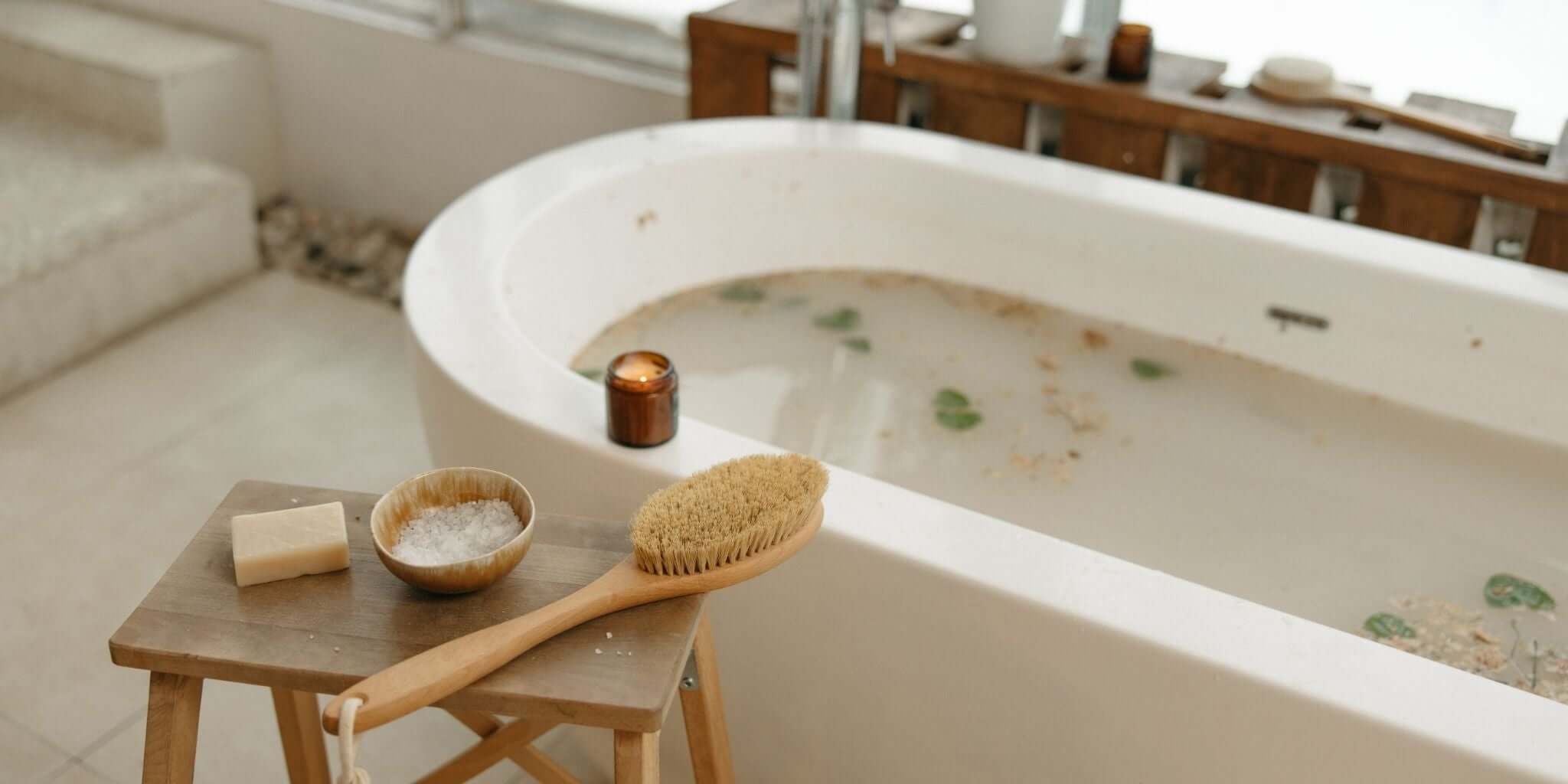草藥浴的治療功效
沐浴不僅是一種日常儀式,它還是恢復思想、身體和精神活力的機會。當與草藥的治療特性相結合時,您的沐浴將成為放鬆和治療的聖地。幾個世紀以來,薰衣草、洋甘菊和尤加利等草本植物因其舒緩皮膚、平靜心靈和振奮感官的功效而備受珍視。
了解如何利用 Sacred Plant Co 的優質草藥來提升您的自我照顧程序,獲得極致的沐浴體驗。
草藥浴的歷史:流傳千古的儀式

草藥浴有著悠久的歷史,植根於世界各地的文化,不僅因其清潔功效而受到尊崇,而且作為治療、放鬆和恢復活力的神聖儀式。探索這些傳統的起源可以提供一個獨特的視角來了解草藥如何長期與自我照顧和健康緊密相連。
1. 古埃及:埃及豔後克莉奧佩特拉的秘密
2. 羅馬浴室:集體療養
3. 傳統中醫:平衡能量
4. 美洲原住民汗蒸籠:排毒與恢復活力
5. 歐洲民間傳統:療癒身體與心靈
現代外送:永恆的做法
儘管方法可能已經演變,但草藥浴的本質保持不變——一種舒緩、治療和恢復活力的做法。透過將這些歷史傳統融入您的日常生活,您將獲得數百年的整體健康智慧。
為什麼要在沐浴中使用草藥?
草藥浴不僅是一種奢侈的享受,它也是增進健康和幸福的有效方法。這就是為什麼在沐浴中加入草藥可以產生巨大影響的原因:
身體上的好處
精神上的益處
情感益處
草藥浴的好處

1.皮膚健康
金盞花和洋甘菊等草本植物具有天然的抗發炎和抗菌特性,非常適合舒緩乾燥、受刺激或敏感的皮膚。
2.緩解壓力
薰衣草和聖羅勒等令人放鬆的草藥可以鎮靜神經系統、減輕焦慮並促進安穩的睡眠。
3.緩解疼痛
4.改善血液循環
迷迭香和生薑可以促進血液流動,幫助您的身體感覺更有活力、更精神。
5. 排毒
最適合沐浴的草本及其功效
薰衣草
- 好處:舒緩心靈,減輕壓力,促進更好的睡眠。
- 使用方法:將乾燥薰衣草花放入平紋細布袋中或在洗澡水中加入薰衣草精油。
金盞花
- 優點:滋潤和舒緩受刺激的皮膚,減少發紅,促進癒合。
- 使用方法:將金盞花浸泡在熱水中,然後倒入浴缸中。
迷迭香
- 益處:振奮精神,促進血液循環,消除疲勞。
- 使用方法:將新鮮或乾燥的迷迭香浸泡在熱水中,然後加入沐浴液中。
洋甘菊
- 優點:緩解皮膚刺激、減輕壓力並促進放鬆。
- 使用方法:將乾洋甘菊花添加到您的沐浴液中,享受溫和、舒緩的浸泡。
尤加利
- 益處:清理鼻竇、舒緩肌肉酸痛、促進血液循環。
- 使用方法:在沐浴中加入尤加利葉或精油,享受清爽的浸泡。
自製草本沐浴配方

1. 放鬆的薰衣草和洋甘菊浴
原料:
指示:
- 將草藥放入細布袋中並將其緊緊固定。
- 將袋子放入洗澡水中,浸泡 5-10 分鐘。
- 浸泡並讓平靜的香氣籠罩著您。
2. 提神迷迭香薄荷浴

原料:
指示:
- 將草藥放入 2 杯水中煮 10 分鐘。
- 將茶水過濾後加入洗澡水中。
- 享受令人神清氣爽的浸泡,喚醒您的感官。
3. 蒲公英蕁麻排毒浴

原料:
指示:
- 將草藥浸泡在熱水中 15 分鐘。
- 過濾並將茶水倒入浴缸中。
- 浸泡20分鐘,可排毒、恢復活力。
4.舒緩肌肉的尤加利薄荷浴

原料:
指示:
- 將草藥和鹽混合在一個碗裡。
- 將混合物灑進洗澡水中。
- 浸泡20分鐘,可緩解緊張情緒,暢通呼吸。
打造完美草藥浴的秘訣
- 根據您的需求選擇草藥:
-
使用細布袋:
- 將草藥放在平紋細布袋中,方便清理,同時仍能享受其功效。
-
用精油增強效果:
- 加入幾滴薄荷或薰衣草等精油以獲得額外的效果。
-
設定心情:
- 調暗燈光,點上蠟燭,播放舒緩的音樂,營造出類似水療中心的氛圍。
-
事後補水:
- 泡完澡後,喝水來補充能量並排毒。
關於草藥浴的常見問題
我可以使用新鮮香草嗎?
是的,新鮮草藥是有效的,但與乾燥草藥相比可能需要更大的數量。
草藥浴對敏感肌膚安全嗎?
金盞花和洋甘菊等溫和的草本植物非常適合敏感肌膚。在全面使用之前,請務必進行斑貼測試。
多久可以進行一次草藥浴?
您可以每週享受 2-3 次草藥浴,具體取決於您的皮膚需求和放鬆目標。
用草藥提升你的沐浴體驗

草藥浴是一種輕鬆的方式,可以將單調的日常生活轉變為恢復活力的自我照顧儀式。無論您是想放鬆身心、緩解疼痛或滋養肌膚,薰衣草、金盞花和薄荷等草藥都能為您提供自然的解決方案。





